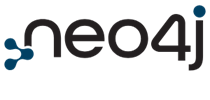
Product Name: Neo4j
Company Name: Neo4j, Inc.
URL: https://neo4j.com
Entry Year: 2007
Market Share (or Graph DB Revenue):
Neo4j is the leader in the graph database market with an estimated 70% market share. It has surpassed $100 million in annual recurring revenue.
Number of Employees: Approximately 500 employees
Capital: Not publicly disclosed
Funding:
Neo4j has raised over $500 million through multiple funding rounds. The most recent Series F round in June 2021 raised $325 million, bringing the company’s valuation to over $2 billion.
Major Users:
Key users include companies like eBay, Walmart, Adobe, NASA, UBS, and Volvo. Neo4j is also used by government agencies, financial institutions, and healthcare providers for diverse graph-based applications.
Key Application Areas:
Neo4j is commonly applied in recommendation engines, fraud detection, network and IT operations, supply chain management, knowledge graphs, social networks, and identity and access management.
Product Overview:
Neo4j is a native graph database designed to handle highly interconnected datasets. It uses a property graph model where data is stored as nodes and relationships, with additional attributes called properties. The product is available in both open-source (community) and enterprise editions, offering scalable, high-performance graph processing for complex queries.
Data Compatibility:
Neo4j supports data import from multiple formats like CSV, JSON, XML, and SQL-based relational databases. It integrates with popular data platforms such as Apache Kafka, Apache Spark, and various BI tools like Tableau and Power BI.
Knowledge Graph Implementation:
Neo4j is widely used to build knowledge graphs, utilizing its property graph model for representing entities (nodes) and their relationships (edges). It supports integration with RDF and ontologies, though it primarily focuses on the property graph model over RDF triplestore models.
Query Method:
Neo4j employs Cypher, its own declarative query language optimized for graph queries. Cypher is designed for ease of use and readability, allowing users to query, manipulate, and visualize complex relationships in graph data.
Natural Language Queries:
Neo4j doesn’t provide native support for natural language queries, but can be integrated with external NLP tools or platforms that translate natural language into Cypher queries. Some advanced use cases involve leveraging natural language processing with Neo4j for domain-specific tasks.
Native Machine Learning:
Neo4j offers the Graph Data Science (GDS) library, which includes graph algorithms and native support for graph-based machine learning models. The GDS library enables tasks such as node classification, link prediction, and graph embeddings directly within the database.
Support for Traditional Machine Learning:
Neo4j integrates with traditional machine learning frameworks (like TensorFlow and scikit-learn) via the GDS library. It facilitates the extraction of graph features for traditional machine learning models, enabling use cases like classification and prediction on graph data.
Support for LLMs:
Neo4j has been integrating with large language models (LLMs) for applications like text analysis, semantic enrichment, and generating knowledge graphs. These integrations are becoming part of broader AI initiatives to combine LLM capabilities with graph databases for deeper insights.
Support for RAG (Retrieval-Augmented Generation):
Neo4j is actively being explored for RAG models. By combining the graph’s ability to store and retrieve knowledge with LLMs, Neo4j can be used as a source of structured data for enhancing RAG systems that improve the accuracy of text generation with relevant, contextual information.
Other Notable Features:
Community support and extensive learning resources through Neo4j University.
Neo4j has a cloud-native managed service called Neo4j Aura for deployment on popular cloud platforms.
Strong ecosystem of connectors, drivers, and integration with enterprise security protocols.







